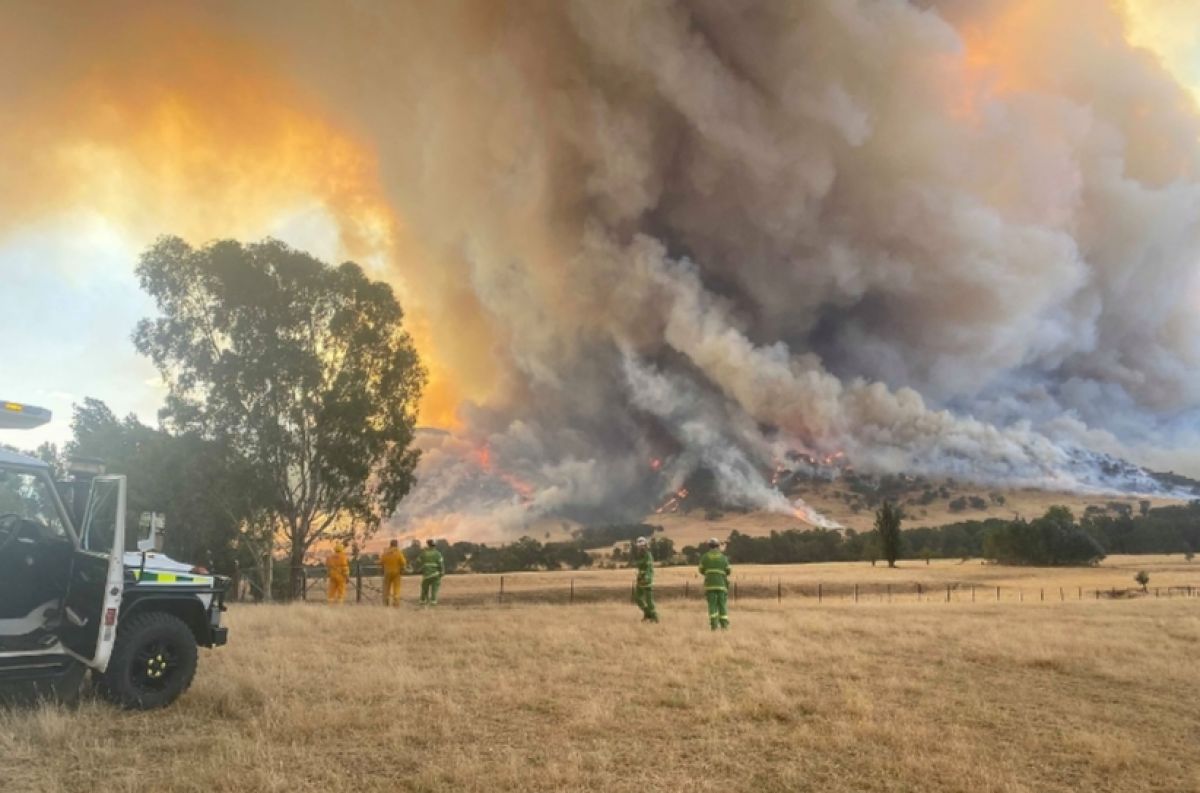We knew the fire would run hard all night, but to come back the next day and see what had actually occurred was a huge shock.
We arrived to news of large-scale fire impacts to a number of communities, house and property losses, and what was later measured to be an 82km fire run overnight.
Corryong had been completely cut off, power and phones were out, and we were hearing that many of our own crew had to return to their own properties to protect them.
On top this, we still had a going fire that was spreading and spotting to the south through the upper Nariel Valley.
Our crews were still working very hard on asset protection after 30 December (and would be for quite some time).
In the IMT our focus was split between supporting our ground crews, working with our Emergency Management Team (EMT) partners to resolve community relief and essential service issues, developing strategies and tactics to contain the fire, and planning for another serious fire weather day that was coming later in the week.
CONDITIONS DETERIORATE
It also caused a number of smaller spot fires in the Upper Nariel Valley to escalate rapidly, join with our main fire and ultimately run into another fire in Tambo district.
By the time the day was over, we were dealing with a fire of more than 375,000ha and 130km from end to end.
In some respects, dealing with the initial fire run is the easy part.
Dealing with the aftermath – assisting communities with relief and recovery needs; liaising with other agencies such as Towong Shire, Agriculture Victoria, Regional Roads Victoria, VICPOL and the ADF; coordinating ground observer and rapid impact assessment teams; managing access to communities via hundreds of kilometres of fire-affected highways and coordinating fodder deliveries – is complex and needs solid leadership, planning and coordination.
Our Level 3 Incident Controllers did an excellent job of leading both the Incident and Emergency Management teams, and I will forever be grateful for the personnel who came from across the state to assist us in key roles within the IMT.
So I write this, more than four weeks from the initial fire run, knowing that our firefight is not yet over.
MUCH WORK AHEAD
We may have the fire contained, but now begins the much harder work of confirming impact, damage and loss, rehabilitating control lines, and working through the many other recovery issues that will arise.
We've got months, if not years of work ahead of us. For the affected communities, their recovery will take time.
For the people and families who have been affected, their lives may never be the same.
But I know every one of our staff, and those from our partner agencies, will do everything in their power to help our community get back on their feet.

Page last updated: 20/05/20